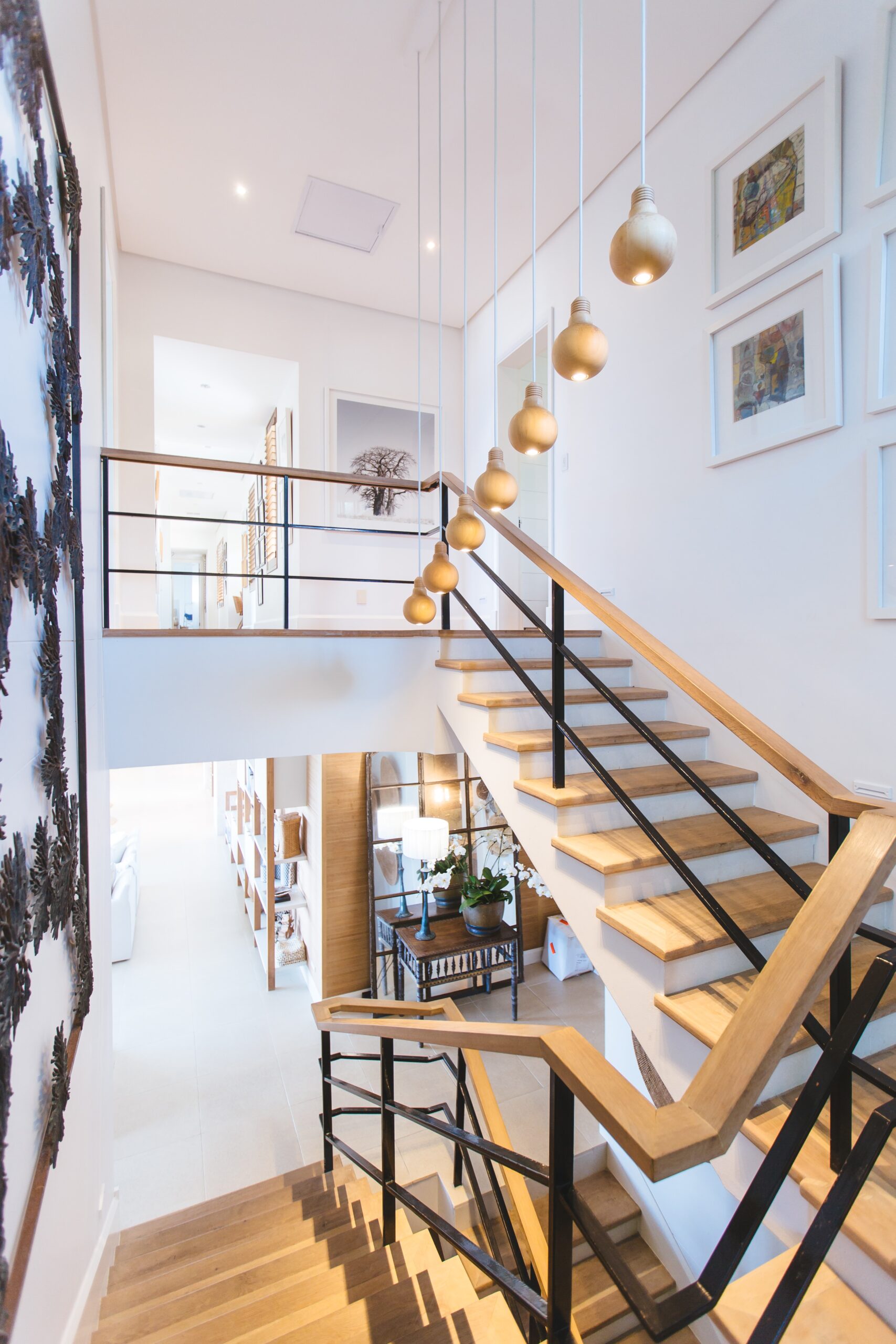Every construction site, whether commercial or residential, has staircases, and to protect and support these staircases, which are also essential for climbing up or down these staircases safely. For a staircase to have a beautiful appearance, the rail must have a beautiful design, and the material used to make them lends them their beauty, strength, and overall aesthetic appeal. So, let’s examine the materials that can be used to construct a sturdy stair railing.
What is a stair railing
A stair railing is a railing specifically designed for stairs that serves as a protective barrier against accidents and falls. One or both sides are frequently exposed or open to a height difference.
What is the distinction between steps and stairs, and when is a handrail required? The dictionary defines a step as a tread and riser. However, distinguishing between steps and staircases is not so straightforward. Both terms refer to multiple actions, and it is acceptable to use them interchangeably.
When stairs are located outside, we are more likely to refer to them as steps, such as the “steps of the capitol building”. For interior applications, the term staircases is preferred.
It is unsurprising that building codes are so complicated given the problematic terminology associated with stairs and handrails. Regarding handrails, some building regulations specify the number of risers or stairs, while others specify the drop. Consequently, it is crucial to consult the local building code for the most recent stair railing codes and regulations.
Here are some of the most commonly used materials for stair railings
1. Wood
Wooden handrails are among the earliest handrail materials still in use. It is still considered antique and elegant today. The greatest aspect of wooden handrails is that they have no particular order or design, so you can personalize them to your liking.
From supporting long-standing balusters with a 4 to 6-inch hand rest to carving wooden panels in a variety of designs to the modern method of attaching glass panels between wooden balusters, wood can do it all with elegance.
Wood is generally non-resistant to water unless it has been treated to withstand UV radiation and the external environment. As a result, wooden handrails are generally only suitable for interior use.
2. Metal (Mild Steel)
In cases where we value strength and durability over aesthetics, mild steel railings can be used because metals are strong and require minimal maintenance.
Even though mild steel railings are susceptible to corrosion, the effects of rusting can now be treated with a variety of paints and chemicals. Wrought iron is the most common metal used for handrails. They are available in a variety of designs on the market and can also be customized. They can be used for both exterior and interior purposes, but must be installed appropriately for exterior use to prevent corrosion.
One of the best features of iron handrails is that they can be finished in a variety of colors according to the theme, from dark, bold hues to soft pastels, allowing for an immediate transformation from a bold to a beautiful appearance.
3. Aluminum
If you’re on a tight budget but want a sturdy and attractive railing, aluminum is your best option. Even though it is inexpensive, it provides the security and aesthetic you require for your home; it is one of the top recommendations from the experts.
In addition to being available in a variety of coatings, aluminum from online frp manufacturers does not corrode or rust. In addition to selecting the appropriate color for your railings, you can also choose between a satin or polished finish.
This is due to the fact that matte aluminum creates a natural-looking texture, whereas polished aluminum is simple to maintain.
4. Iron
Carbon levels in wrought iron are low. Midway through the 1800s, demand peaked for this malleable and decorative material. No longer mass-produced, wrought iron is utilized for restoration, replication, and custom projects. The majority of items that resemble wrought iron are composed of low-carbon mild steel.
Handrails made of wrought iron Handrails made of wrought iron are used both indoors and outdoors in homes and enterprises. Straight and curved stairs can have wrought iron handrails if the budget allows for a custom wrought iron welder.
Using iron railings – Numerous homes and businesses have wrought iron stair railings. They are used inside and outside. The combination of wrought iron balusters and wooden handrails creates a dramatic effect.
5. Glass
Glass may not appear to be a safe material for stair design, but if the proper form of glass is used, it can provide more strength than one might initially believe. Glass is available in clear, semi-transparent, tinted, frosted, and etched forms.
Interior or exterior glass railings are common in contemporary commercial and residential structures.
Glass stair railing panels can be wholly or partially framed with stainless steel or aluminum, or they can be installed without a frame.
6. Marble
Marble is the best material for providing a home a timeless appearance. It is widely utilized in regions where it is readily accessible. The building will appear regal with marble railings. The glossy, refined finish will enhance the building’s appearance. Marble railings are utilized both inside and outside of the structure. Marble balustrade is incredibly sturdy, long-lasting, and resistant to heat and fire.
Marble is a luxurious, more costly material than other railing materials. The price of marble railings is contingent on the variety of marble used. Italian marble costs more than its Indian counterpart.
Some iconic structures, such as the Taj Mahal, are still standing because they were constructed from marble. If properly maintained, marble handrails have a long lifespan. It is incredibly durable and can easily support large loads. Marble railings have a minimum 50-year service life. This can be increased through appropriate upkeep.
Marble is aesthetically distinct. It radiates so brightly that it appears to glow. It provides your home a luxurious appearance. Marble handrails can be tailored to your specifications and carved into various forms. The animal carvings on the marble balustrades of some palaces add a regal touch to their interiors.
7. Stone
Historic commercial structures typically have stone railings. Stones are durable and resistant to extreme weather conditions and heavy foot traffic. Stone railings can be installed on both the interior and exterior of a structure. One can make the railing visually enticing by giving it clean lines and symmetry.
Stone railings are durable, stain-resistant, waterproof, and sturdy, with a lengthy maintenance-free life span. Stone railings can be fashioned from a variety of stones, such as yellow sandstone, Jaisalmer stone, granite, and quartzite, among others.
Stone railings are durable and can withstand significant weight. They do not change over the course of their existence. Stone railings are still standing in religious sites. They possess a lengthy lifespan.
Stone railings are a symbol of status. They are more expensive than other forms of railing. The price of stone railings is dependent on the type of stone employed. Stone railings can be customized to your specifications. Stone balustrade installation is an expensive endeavor. They add a touch of elegance to your structure. They are frequently found in palaces, religious buildings, and ancient monuments that have endured for decades or centuries. Stone railings are more compatible with European interior design than with contemporary interior design.
8. Steel
Alongside cement, steel continues to be one of the most popular and extensively used building materials. Despite being much denser than the majority of metals used in industrial applications, it is extremely durable. The versatility of steel enables it to be utilized in industrial staircases, egress stairs, and stair stringers.
The only disadvantage of using steel is its susceptibility to corrosion. This necessitates the use of stainless steel by contractors in applications where the metal will be exposed to the elements. Nitrogen, nickel, molybdenum, and chromium are added to steel to increase its resistance to corrosion.
The grade of steel used in a steel balustrade determines its maintenance requirements. Other metals require more maintenance than stainless steel. Steel of inferior quality is more susceptible to corrosion.
The paint on steel railings must be repainted because it can wear off over time. Simply wipe the railings with a damp cloth if they appear filthy, and they will be as good as new. Steel cannot deform, distort, or fracture. Steel railings can withstand severe climatic conditions.
Steel railing instantaneously imparts a contemporary, sleek, and minimalistic appearance to a structure.
Many contemporary homes employ stainless steel railings due to their reflective surface. It readily combines with glass or wires without causing design complications. However, steel railings do not offer a great deal of design flexibility.
Conclusion
It is essential to select the proper material for stair railings when designing your ideal staircase. Railings appear in a wide variety and serve multiple purposes. In addition to being an essential structural element, railings can impact the atmosphere and appearance of a space. For this reason, it is crucial to select the proper railing materials for your endeavor, such as a classic wrought iron stair railing.
The aesthetics of your endeavor will be significantly impacted by the materials you employ. When evaluating railing materials, it is important to strike a balance between form and function.




